The different types of façade cladding
Have you recently had your home renovated? If so, there is a good chance you have had the wooden windows, single glazing or sanitary equipment replaced. But did you know the exterior wall, the façade, also needs maintenance over the years? The façade of your home is exposed to different weather conditions every day, and this can cause cracks and empty joints. All of which can have a negative effect on the appearance of the façade. To make your home look new again, façade cladding is a great option. Read on to find out what types there are.
FAÇADE CLADDING, WHAT IS THAT?
Façade cladding is material used to protect the outside of the wall of a house or building against weather influences such as rain, wind, snow and sun. It also provides extra thermal insulation.
Many home owners choose to use façade cladding to hide and protect defects on their exterior wall. Yet few people know that you can also use wall claddings to give a home a completely new look. New-build homes often have a similar appearance, especially in the Netherlands, which means façade cladding can be a nice way to distinguish yourself from the neighbours. This is especially true given the many wall cladding types – the possibilities really are endless these days.
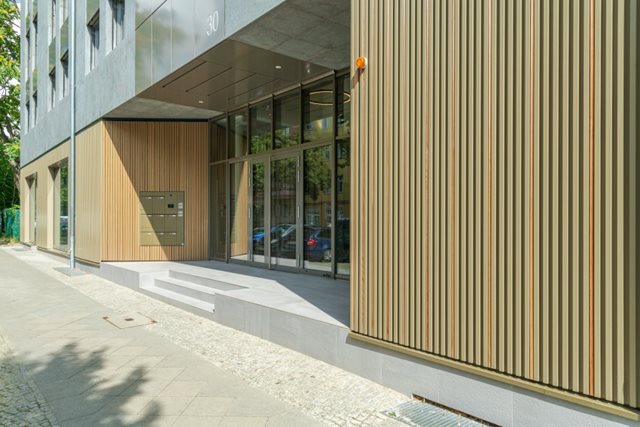
GET TO KNOW ALL WALL CLADDING TYPES
We have many different types of façade cladding. This is mainly because the range of materials we can use has increased enormously in recent years. For example, wood was the preferred option in the past, but UPVC or aluminium is now a real favourite. When it comes to façade cladding, you can now choose from the following types:
#1 Traditional wooden façade cladding
Are you a fan of a natural, elegant look? Wooden façade cladding most likely sounds like music to your ears then. This material is known for creating a rustic, natural and warm atmosphere. In order to enjoy your rustic façade for a longer period, it is advisable to choose a wood type that ages over the years. If you choose a harder wood type, the ageing will be more beautiful and the façade cladding will require less maintenance.
Of course it is also possible to paint the wooden façade cladding in a colour of your choice. Please note that this will also require maintenance, as the wood will need to be repainted over the years.
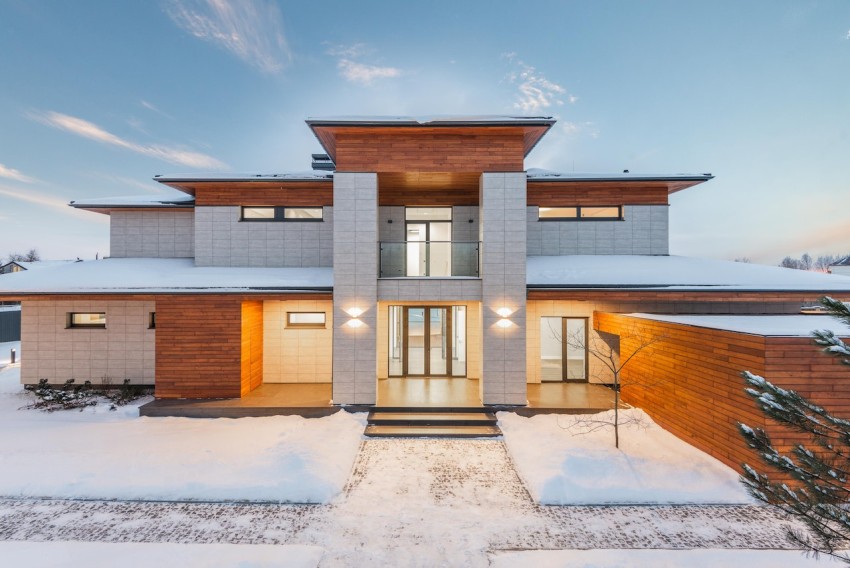.jpg?width=640)
#2 UPVC wall cladding
Maintaining wooden façade cladding takes a lot of time and money. If you don’t treat it periodically it can rot. If this sounds like too much trouble for you, UPVC façade cladding may be an excellent choice. UPVC is known for requiring little maintenance, being environmentally friendly, and also being available in different types, styles and colours. With UPVC wall cladding, you have a choice from:
Polyvinyl chloride (PVC)
Façade cladding made from PVC is also known as full foam façade cladding. Full foam is created by mixing polyvinyl chloride with yeast. This gives this material a high material density. It also ensures the full foam is very strong, scratch-resistant and relatively cheap.
Fibre cement
This type of UPVC façade cladding is more vulnerable than PVC. It is therefore advisable to only use fibre cement in places where the material cannot be damaged or there is very little chance it will be damaged.
High Pressure Laminate (HPL)
Another type of UPVC wall cladding for the façade is High Pressure Laminate, or HPL. This material is created by pressing and thermosetting resin and paper together under high pressure. Because HPL is extremely suitable for use around a house, you mainly see HPL in the finishing of dormer windows, fascias and gutters.
Polyester
Finally, you can choose polyester façade cladding. Polyester façade cladding is best known for its “stone motif”. The current techniques are so advanced that it is no longer distinguishable from real masonry. This is ideal if you want to strengthen or freshen up your existing façade.
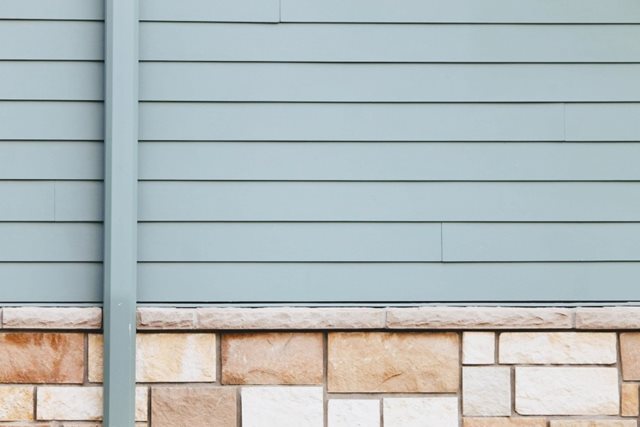
#3 Natural slate façade cladding
Would you prefer special façade cladding to give your home a completely different look? Slate wall claddings are a good option here. This type of façade cladding is extremely popular in Belgium, but is increasingly being seen in the Netherlands. The unique thing about this type of wall covering is that it can be used in different ways. You can keep a classic brickwork pattern, or choose rectangular slates for a modern look.
#4 Stone strip façade cladding
Another possibility to protect the façade of your home is to invest in brick strip wall cladding. This façade cladding is made of thin strips of brick or UPVC that are glued directly to the exterior façade. This gives the illusion that the existing brick wall has been renovated. Moreover, the brick strips are relatively thin, which means there is relatively little loss of space with this type of façade cladding.
#5 Industrial metal wall claddings
A robust and industrial appearance is indispensable in many modern homes. Metal wall cladding is the perfect choice to complete this look. This type of façade cladding has a long lifespan, requires little maintenance and is also extremely strong. It is no surprise that metal wall claddings last more than 30 years. If you are considering having your façade covered with metal, you can choose from the following variants:
Zinc
Do you want to renovate your home as sustainably as possible? Zinc is an excellent choice. Zinc is extremely durable and an inexpensive form of metal façade cladding. Zinc is also easy to work with, so you can choose from different colours. This means your exterior façade will be given a robust and colourful appearance at an affordable price.
Copper
Copper is a less common type of metal façade cladding. This is because copper is a precious metal with a high price. Yet copper is the perfect choice for anyone who loves a robust appearance. The copper colour changes over the years from orange to orange-brown and then green. This creates a special appearance and turns your home into a real showpiece.
Aluminium
A cheaper type of metal façade cladding is aluminium. Aluminium wall cladding is easy to produce and very light in weight. However, this does not reduce its lifespan. This metal is incredibly strong, which means you can enjoy aluminium façade cladding for at least 30 years. Moreover, this type of façade cladding does not require intensive maintenance.
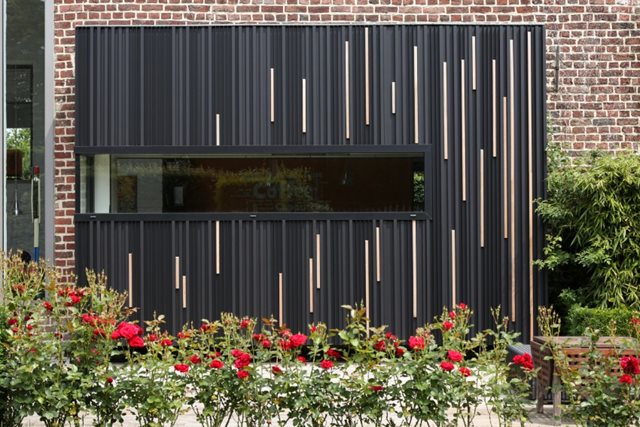
#6 Embrace nature with natural façade cladding
Finally, when renovating your exterior façade, you can choose from natural façade cladding. This type of wall cladding is also known as a green façade, plant façade or vertical garden. As the name suggests, this façade cladding involves the use of climbing plants. These plants are known for their ability to naturally grow against walls with ease. To provide extra strength, a wooden or metal louvre is placed against the outside wall with natural façade cladding.
Although a natural exterior façade looks beautiful, it has a number of disadvantages. For example, climbing plants can grow very slowly, which means that it can take years before the entire exterior façade is covered. In addition, this type of wall cladding requires quite a lot of maintenance. Over time, parts of the plants may die, making removal of the dead plant matter necessary.
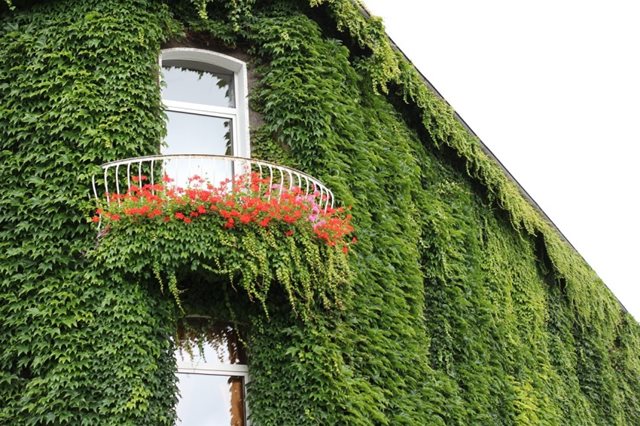
RENSON® CAN OFFER YOU ALL THE ADVICE YOU NEED
Are you considering giving the exterior façade of your home a different look? And are you still not sure about the different types? Then get some advice from one of our official Renson dealers. We have been specialised in aluminium façade cladding for years and look forward to introducing you to the various possibilities. Our wall claddings are not only available in multiple colours, but also in different patterns. Make an appointment soon and who knows, your home may soon be the stand-out property on your street.
